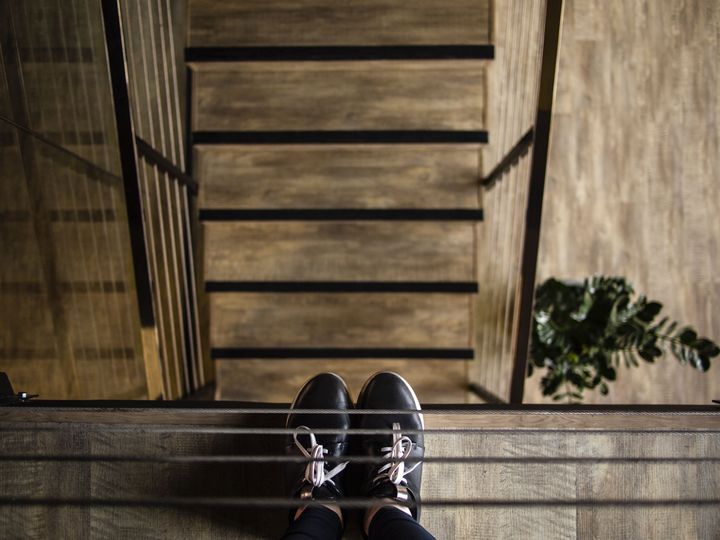Are you creating a baby registry? You might want to leave the baby carrier off of it.
That's the finding of a March 2017 study of pediatric injuries leading to ER visits. Researchers estimated that between 1991 and 2011, nearly 1.4 million children under age 3 visited U.S. emergency rooms for nursery product-related injuries. Read on to see which 5 nursery items sent the most kids to the ER...and read further for reasons you shouldn't panic about your registry just yet.

MAYBE REGISTER FOR STAIR CARPETING.
#5: High Chairs
80% of nursery product injuries resulted from falls. That percentage is even bigger for high chair injuries, over 90% of which result from falls.
High chair injuries increase with age, so consider putting that chair in storage once your child is old enough to get out of it.
#4: Baby Walkers/Jumpers/Exercisers
If your mom offers you the same baby walker or jumper that you used as a kid, you might want to politely decline. Even though these items are no longer sold in stores, they still make the Top 5 list because of the sheer number of injuries they caused between 1991 and 2003.
If you have borrowed a walker or jumper, you might be comforted to know that after 11 months, children are injured in them at a much lower rate. Keeping the walker on the main level of your home, and, if possible, making it stationary, will make it considerably safer.
#3: Strollers/Carriages
The most typical stroller-related injury is a fall resulting from a tip-over, most of which are caused by hanging heavy items on the handlebars.
It may help to look at the rest of your registry to help make your stroller more safe. If you're planning to carry a large diaper bag, you'll want to opt for a stroller with a big enough undercarriage. If you prefer traveling light, you may be safer with a smaller stroller model that allows for a hanging bag.
#2: Cribs/Mattresses
75% of the deaths included in the study occurred in cribs and mattresses, making them the most likely nursery object to result in a life-threatening injury.
Before that number makes you throw out your crib, consider that most of those deaths were a result of SIDS. Public awareness campaigns like Back to Sleep and Bare is Best have have significantly reduced the overall number of SIDS deaths.
Crib and mattress injuries decrease in severity, but increase in frequency, as children age. That's because once kids are a little older, they're more likely to roam around the crib or fall out of it.
Some children are injured by bedding designed to protect them. Crib bumpers, which have been linked with suffocation, entrapment, and strangulation, are not recommended by the American Academy of Pediatrics.
#1: Baby Carriers
Holding a baby snugly around your chest seems like the safest way to protect him or her from danger. But your baby carrier may be the most dangerous item on your registry. For infants six months and younger, baby carriers accounted for a whopping 54% of injuries.
Although the rest of the top 5 injuries were most likely to be caused by the child falling, injuries from baby carriers were over 5 times as likely to result from a caregiver fall than a child fall.
The study's authors recommend keeping areas clear of tripping hazards, a hilarious suggestion for exhausted parents just trying to put one foot in front of the other. Mothers using baby carriers may also be experiencing common postpartum symptoms that can interfere with balance, such as a shifting center of gravity or a restricted freedom of movement post C-section.
Whether in a carrier or in arms, parents are going to hold their babies, so the findings of this report may not change your mind about using a carrier. But it should make you more cautious about using that carrier on the stairs, which puts your child at increased risk of injury.
Before You Start Panicking About Your Nursery Death-Trap...
These five top injuries might make you want to start bubble-wrapping your home, or deciding to do away with baby items altogether. That would be an overreaction.
First, the products themselves are in most cases not dangerous. The researchers found that only 0.9% of the injuries included resulted from faulty products.
Second, most of the injuries were not life-threatening. Nearly 95% of the children injured were treated at the ER and released.
Third, 90% of the injuries happened at home. The fact that babies are injured by household objects may not be a problem with the objects, but instead a normal consequence of young children exploring their world.
